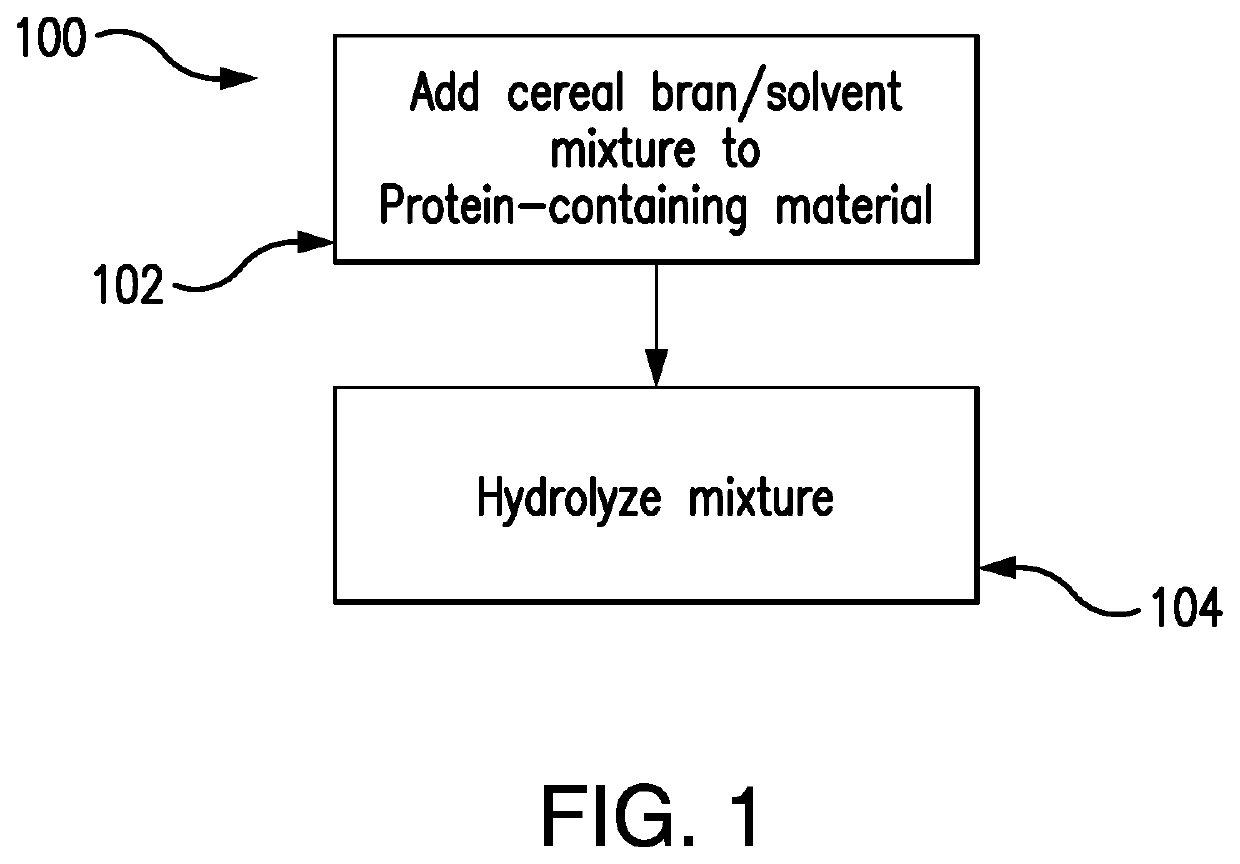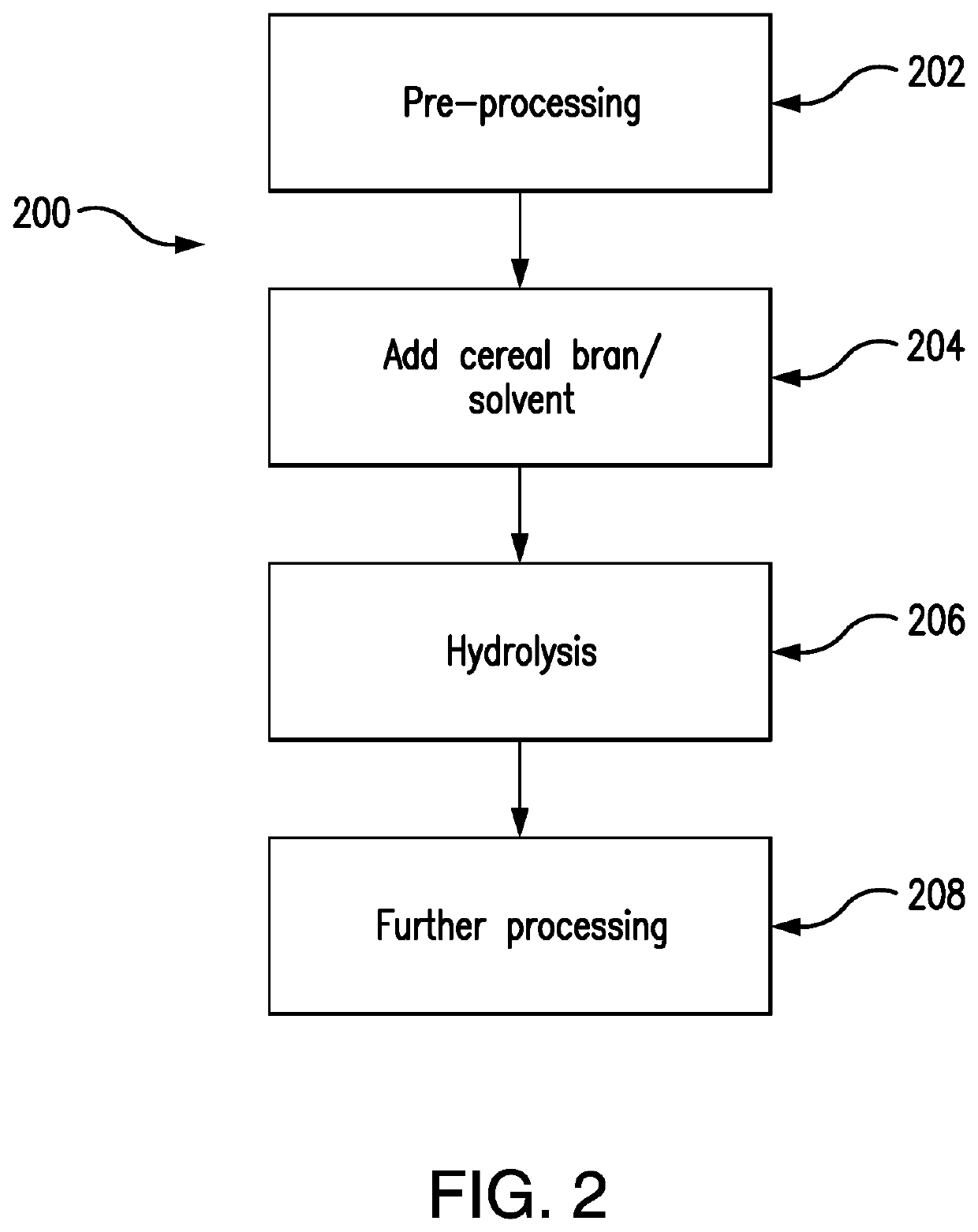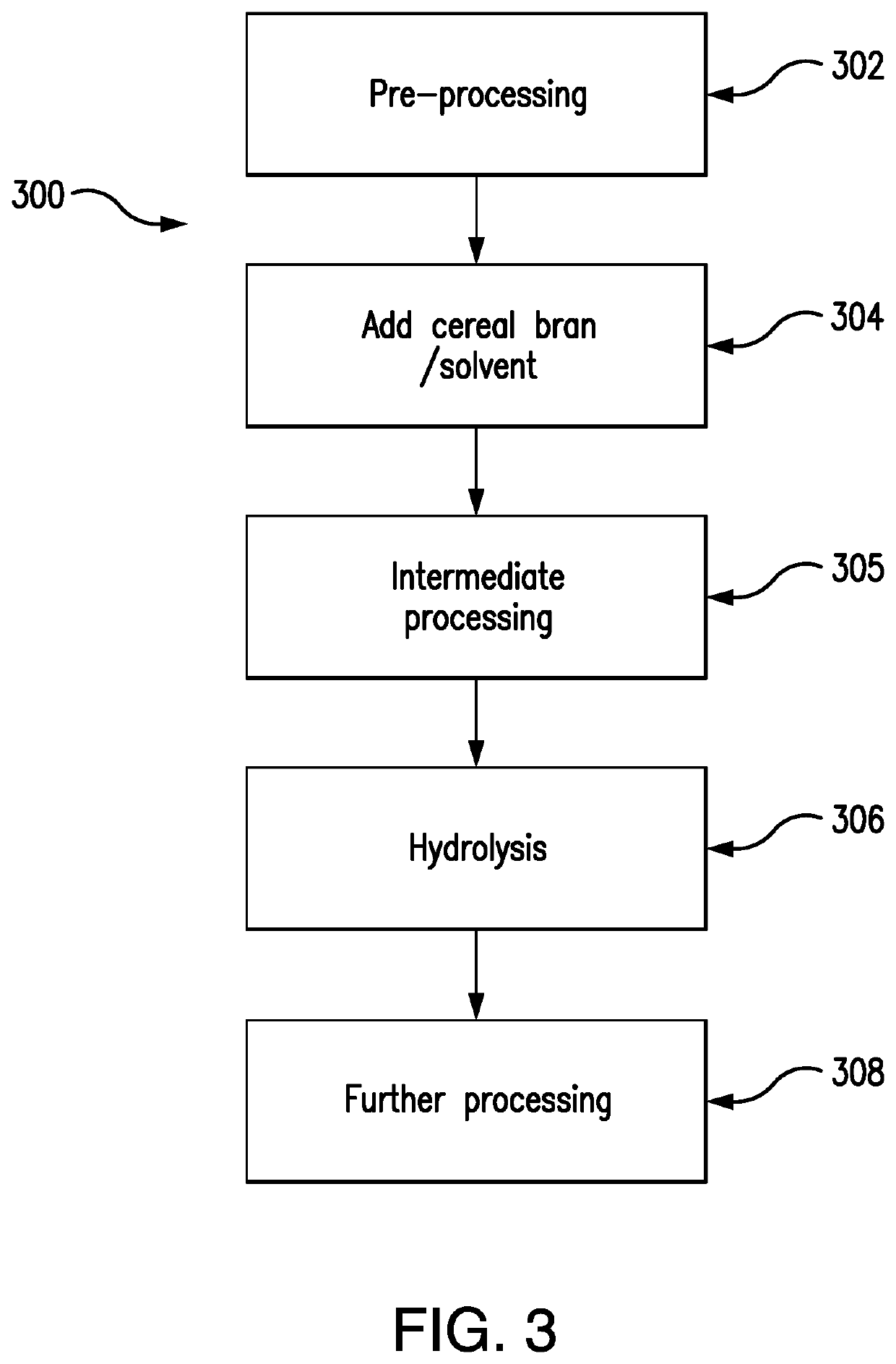Methods for producing proteinaceous food product ingredients, a pet food comprising said ingredient and a method of removing malodors from, and/or increasing the palatability of, said ingredient
a technology of proteinaceous food and ingredients, applied in the field of food product ingredients, can solve the problems of increasing the cost of food ingredients, such as meat protein, prohibitively expensive for pets and companion animals, and forming significant off odorants, and achieve the effect of reducing or eliminating odors
- Summary
- Abstract
- Description
- Claims
- Application Information
AI Technical Summary
Benefits of technology
Problems solved by technology
Method used
Image
Examples
example 1
[0149]Sample Preparation
[0150]Raw feathers were collected and a portion thereof subjected to cleaning by washing with tap water within 5 hours of collection. A second portion was used “as is” as the control sample identified by Sample ID FM-RRF. To produce the cleaned feathers, the raw feathers were collected and frozen within 5 hours of collection. 60 kg of frozen feathers were then thawed in a temperature of 40° F. and then washed with tap water at a temperature of 60° C. in a Z blade mixer for 10 minutes, and then rinsed with tap water at a temperature of 60° C. for 10 minutes. The washed feathers were drained and / or dried to a moisture content of about 70%. The thus cleaned feathers were divided into two portions—a first inventive sample to which cereal bran and a solvent are added (Sample ID FM-DRB) and a second, comparative sample that is subject to hydrolysis without addition of cereal bran and solvent (Sample ID FM-CRF).
[0151]Each sample was subjected to st...
example 2
ive Descriptive Analysis of Feather Meal
[0152]Feather meal can be a useful source of protein in foods and feeds, but feather meal processing can create undesirable aromas that limit the use of feather meal. Aroma characterization and detection can be reliably and reproducibly measured using sensory methodologies including quantitative descriptive analysis (QDA). QDA uses trained judges who align on a common vocabulary to characterize the aroma attributes of the samples of interest. Once the attributes are selected and agreed, standards are used to anchor and standardize each judge's measurement of the various attributes. Duplicate measurements on samples presented in monadic-sequential order (one at a time, one after the other) create a robust data set that can then be subjected to statistical analysis to arrive at an aroma profile that does or does not distinguish the samples from each other. Using this methodology, feather meal researchers can learn what treatments improve the aro...
example 3
tudies with Feather Meal
[0163]Pet foods for both cats and dogs were prepared incorporating the food product ingredient of Examples 1 and 2 according to the following compositions:
TABLE 4Exemplary Pet FoodsULP9537ULP9538ULP9536(dog) and(dog) and(dog) andULP9540ULP9541ULP9539Pet Food sample ID(cat)(cat)(cat)Food product ingredientFM-RRFFM-CRFFM-DRBsample IDProtein N x 6.2531.531.333.2(Rep 1) (%)Fat Ether (Rep 1) (%)14.5914.4913.87Moisture (Rep 2) (%)7.157.425.52Ash (Rep 2) (%)5.35.25.5Crude fiber (Rep 2) (%)1.51.71.8Gel ratio (%)95.894.593.9Aw0.420.430.278Total Dietary Fiber (%)9.98.17.9Insoluble Fiber (%)97.57.7Soluble Fiber (%)0.90.60.2Total Starch (%)35.131.834.5Hexanal mg / kg (Marsmethod)252019Peroxyde Value mEq / kg19.426.919bulk density g / L388411420Tryptophan %0.40.350.38Cystine %0.740.720.78Methionine mg / kg664267466871Alanine %1.781.831.89Arginine %1.952.012.1Aspartic Acid %2.552.612.7Glutamic acid %4.354.434.62Glycine %1.861.881.99Histidine %0.680.680.69Isoleucine %1.441.471.54Le...
PUM
| Property | Measurement | Unit |
|---|---|---|
| pressure | aaaaa | aaaaa |
| digestibility | aaaaa | aaaaa |
| digestibility | aaaaa | aaaaa |
Abstract
Description
Claims
Application Information
 Login to View More
Login to View More - R&D
- Intellectual Property
- Life Sciences
- Materials
- Tech Scout
- Unparalleled Data Quality
- Higher Quality Content
- 60% Fewer Hallucinations
Browse by: Latest US Patents, China's latest patents, Technical Efficacy Thesaurus, Application Domain, Technology Topic, Popular Technical Reports.
© 2025 PatSnap. All rights reserved.Legal|Privacy policy|Modern Slavery Act Transparency Statement|Sitemap|About US| Contact US: help@patsnap.com



